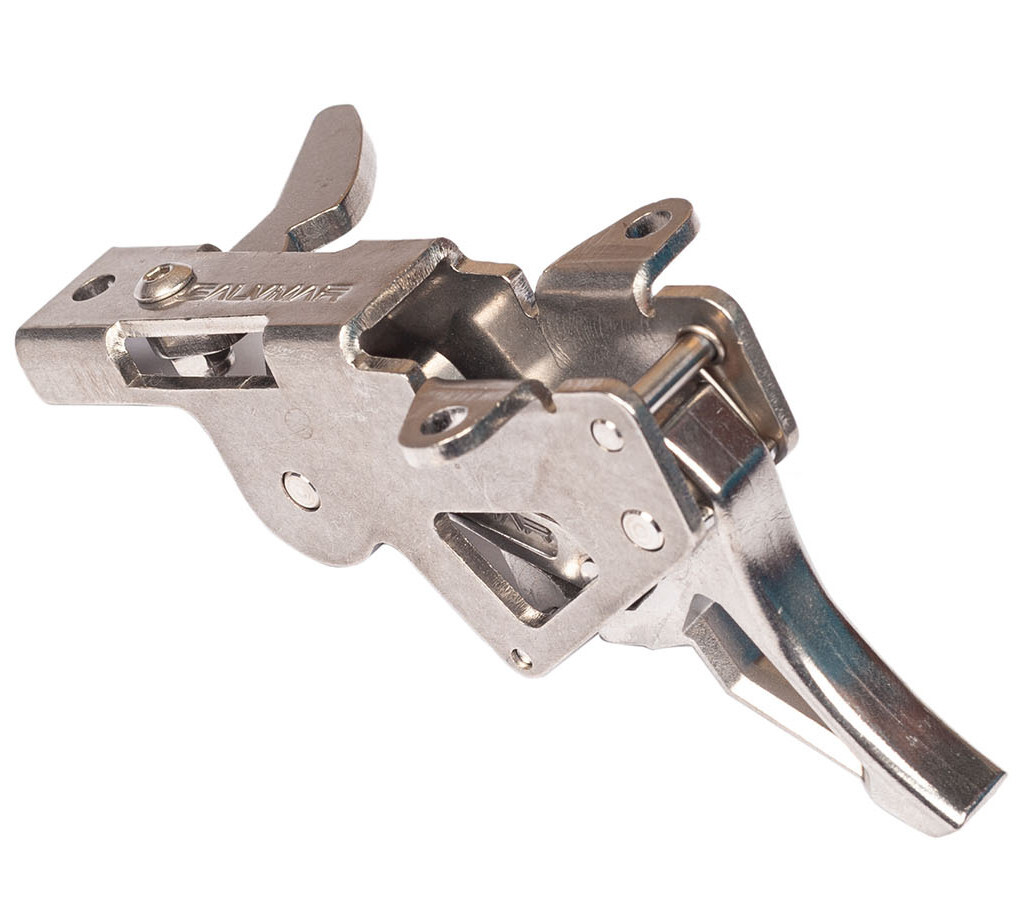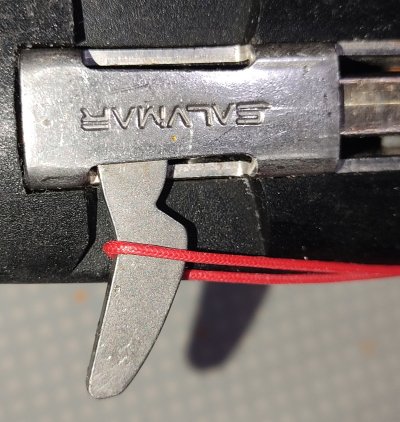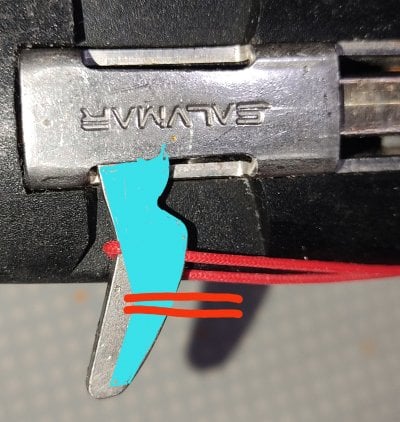Here is one of the earliest reverse trigger mechanisms, the Sea Hornet. Because the sear lever swings down the safety cam goes in front of the trigger, located above the pivot position so that the trigger can be blocked by it. On standard trigger mechanisms the trigger is at the rear with the sear lever in front of it which makes it much easier to put a cam right in behind the trigger. The shallower that the reverse trigger mechanism is the harder it is to locate a safety mechanism, but it can be done as seen in the Avatar handle. The Sea Hornet is a cam lock mechanism, unusual for a reverse trigger. Most reverse trigger mechanisms "lock" by jamming the trigger against a cross bar in the cassette housing, they do not cam lock. They basically "frame lock".


"L" is load, that is when you are applying the bands and getting the gun ready for action, "F" is for fire or shoot. The red dots mark the top of the safety cam to help in showing it being rolled forwards.

"L" is load, that is when you are applying the bands and getting the gun ready for action, "F" is for fire or shoot. The red dots mark the top of the safety cam to help in showing it being rolled forwards.
Last edited:









